The Narrativity of The Salt March In-situ
As we were recreating the narrativity of The Salt March in-situ, we came across the crematorium by accident. The end of Dandi Bridge led us to a fenced area, while, we walked past a burial cemetery which arranged toward the Sabarmati River. We walked a bit further, where we were immediately surrounded by fragments of construction site. On the sandy ground, there rested some metal trusses, small amount of concrete as well as stone and rock. On our way towards the Ashram Road, two folks waved at us intended to show us something beyond the half-covered metal sheets.
It was to our surprise that beyond the those sheets, there was a fully functional crematorium. There is a practical narrative within the site with traditional cremation system, Moksha cremation system, gas cremation system, offices and a place to store pyres.
Dandi Bridge was the historical bridge which Gandhi and his followers marched through before crossing Sabarmati River during the event of The Salt March. The ghost of Gandhi is present in this place. It enriched the existing crematorium narrativity by bringing the narratology of The Salt March in this journey toward the Sabarmati River. The event of The Salt March consequently intruded the place and redefined its ontologies by emphasising the connection between Dandi Bridge, the Crematorium and Sabarmati River.
The ghost of narrativity of The Salt March in place is presented in the above line drawing. The method of drawing was aided by the imagined body movements during The Salt March. In which, the movements were under the condition of the old riverbank previous to the construction of the Riverfront Development. The riverbank was consisted of downward body movements, from Dandi Bridge towards the Sabarmati River. Further to this, the drawing also emphasised the different ground conditions in the place, as things are fragmented and only united with fences as visual boundaries.
The drawing attempted to illustrate the visual journey of the rituals. The family walked through Dandi Bridge, in a downward journey, passing burial cemetery, reached the crematorium, subsequently, they proceed to the rituals around the intensified industrial structure. They would then reach the riverfront, and spread the ashes.
Fenced area between Dandi Bridge and Crematorium
Inside Crematorium
Crematorium existing site is being surrounded by construction site and metal sheets boundaries.
Understanding of Life and Death in Indian Ritual
Ritual of death is always respected and it never completely disappears in India. One of the reasons is religion and the cultural believes.
In Islamic culture, people believe in physical resurrection of the body on Judgement Day. “To God we belong and to Him we shall return” (Quran 2:156). It reminds one of his origin and the ultimate destiny. And deaths becomes a part of a continuum where it stretches to infinity. Therefore, the faith prohibits cremation. And the rituals involve burial and prayers.
Whilst, in Hinduism the belief is that life is based on illusion, enabling a person to believe he is an autonomous being in samsara (cycle of life) which is conditioned by karma. Yet, some souls would break through the illusion based on samsara from the present life to achieve moksha (liberation). Moksha is freedom from karma and samsara. In Hinduism ritual, reincarnation and cremation are tightly connected. Cremation is to free the soul from the body, enabling its journey to the next level, which aim to let the reincarnated soul liberate from the repeated sins of samsara. Therefore, the rituals would combine fire (escape) and water (rebirth).
[The idea of Moksha is also illustrated from the image to the left, called Gajendra Moksha. It is a symbolic tale in Vaishnavism. In which, the elephant named Gajendra, a human being, enters a lake, samsara, where a crocodile, his sin, clutches his leg. Gajendra remembers Vishnu, who liberates him, rather than his pain and suffer].
Movements to the Riverfront City
Image (left) illustrates the fragment of the metropolitan transmission model. It showed the existing territory before rotation, 1, and the territory after rotation, 2.
The journey in the crematorium is preserved while the territory is moved towards the riverfront. The pivot positions between Dandi Bridge and the crematorium, whilst, the crematorium transmitted towards the riverfront. The slides as optical devices projected Pompeii and Edinburgh Castle. The slides manifest themselves into a new seriality of the narrative of The Salt March
Movements of the territories towards the riverfront is animated link to Narratology of Riverfront.
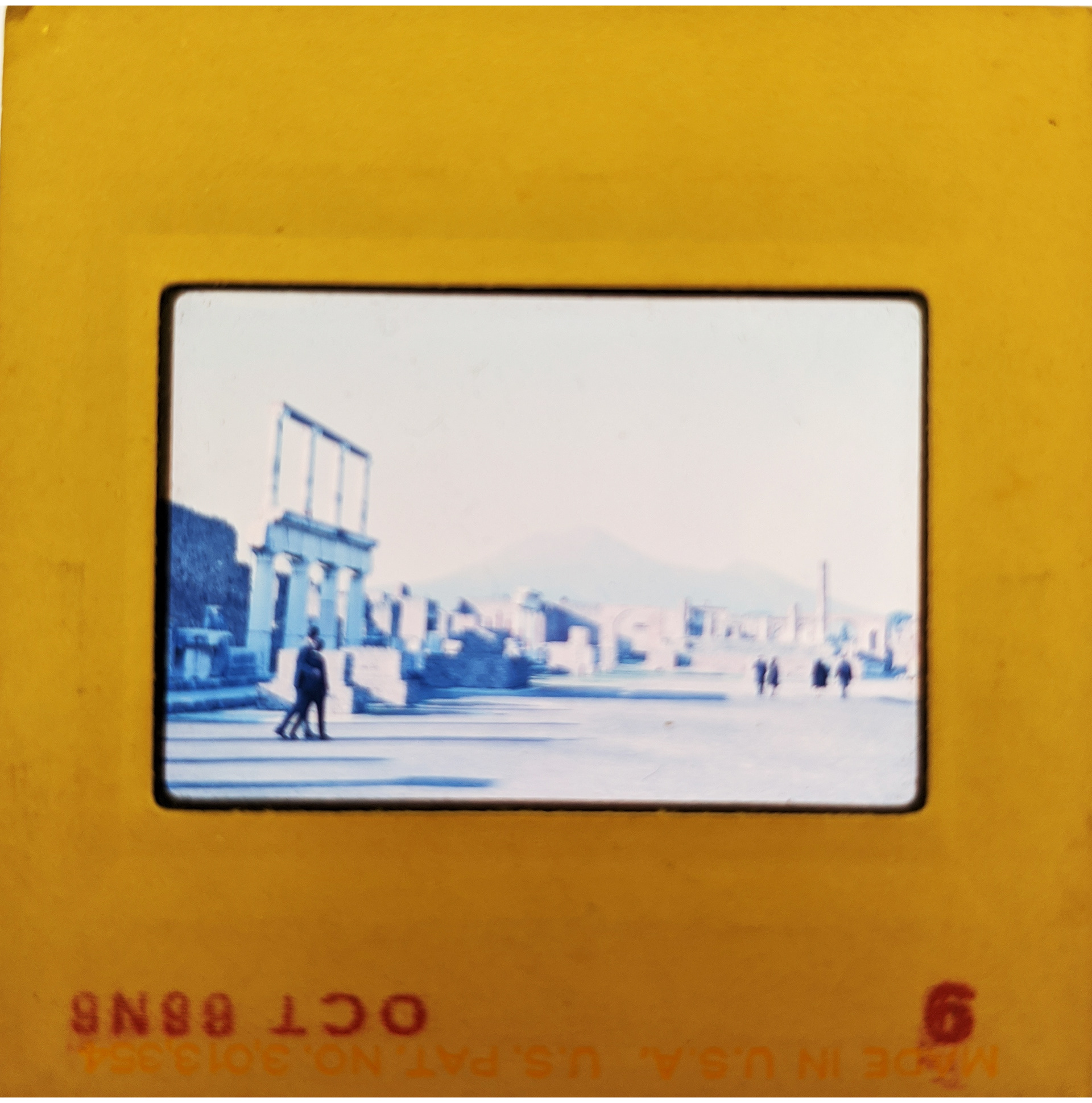
Pompei
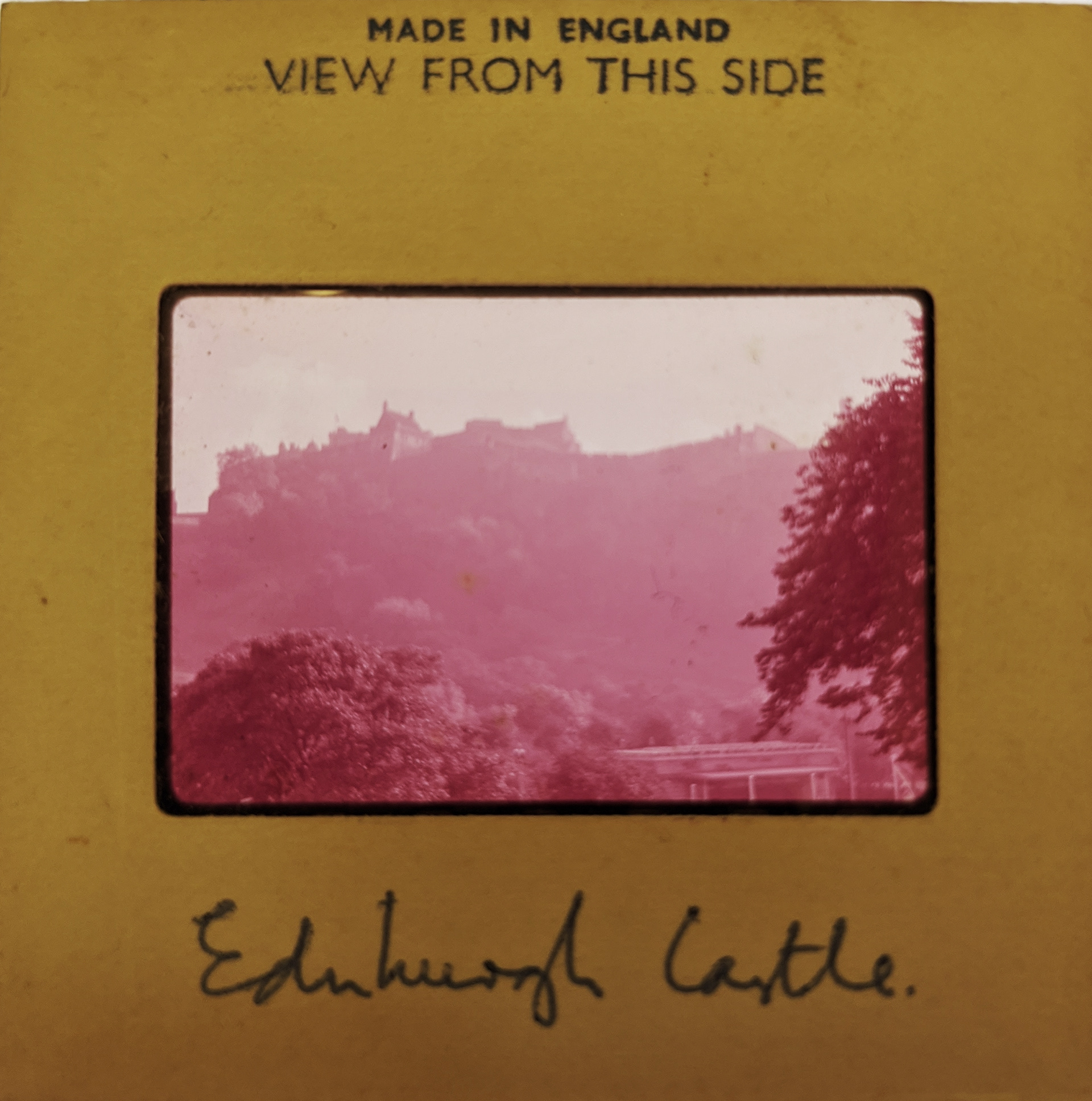
Edinburgh Castle

Edinburgh Princess Street

Royal Edinburgh Military Tattoo
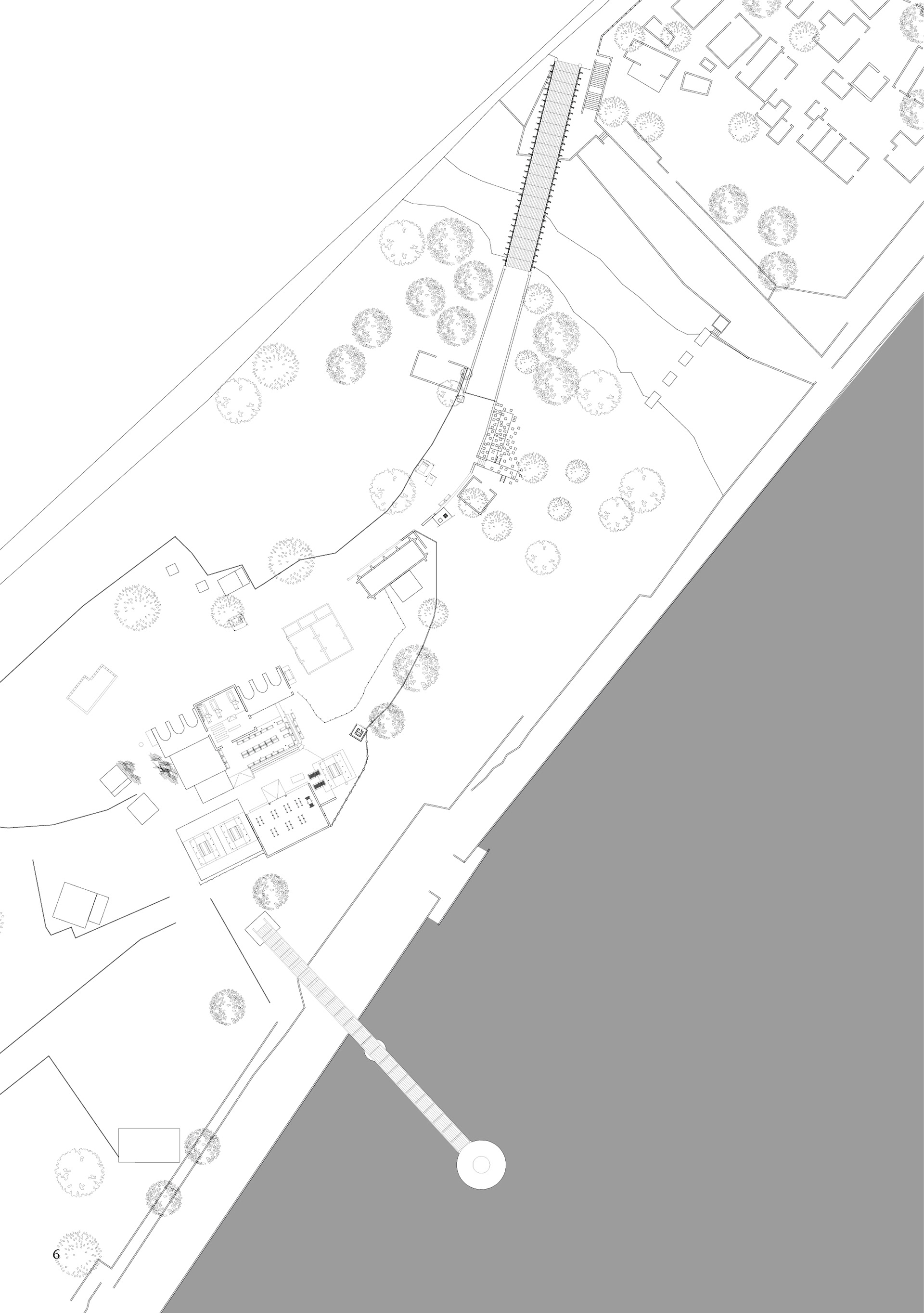
Existing Crematorium
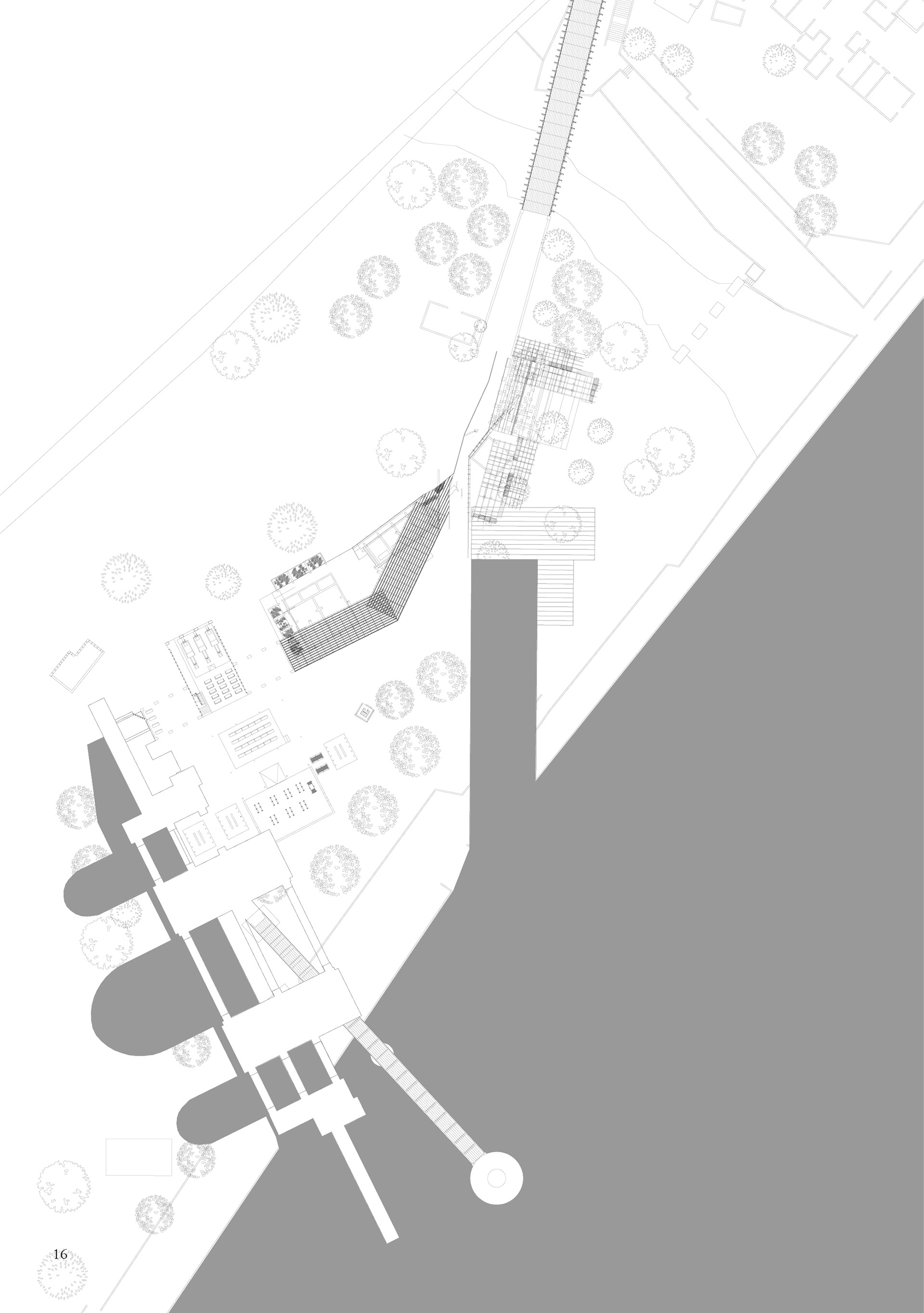
Crematorium Development

New Wall in Crematorium
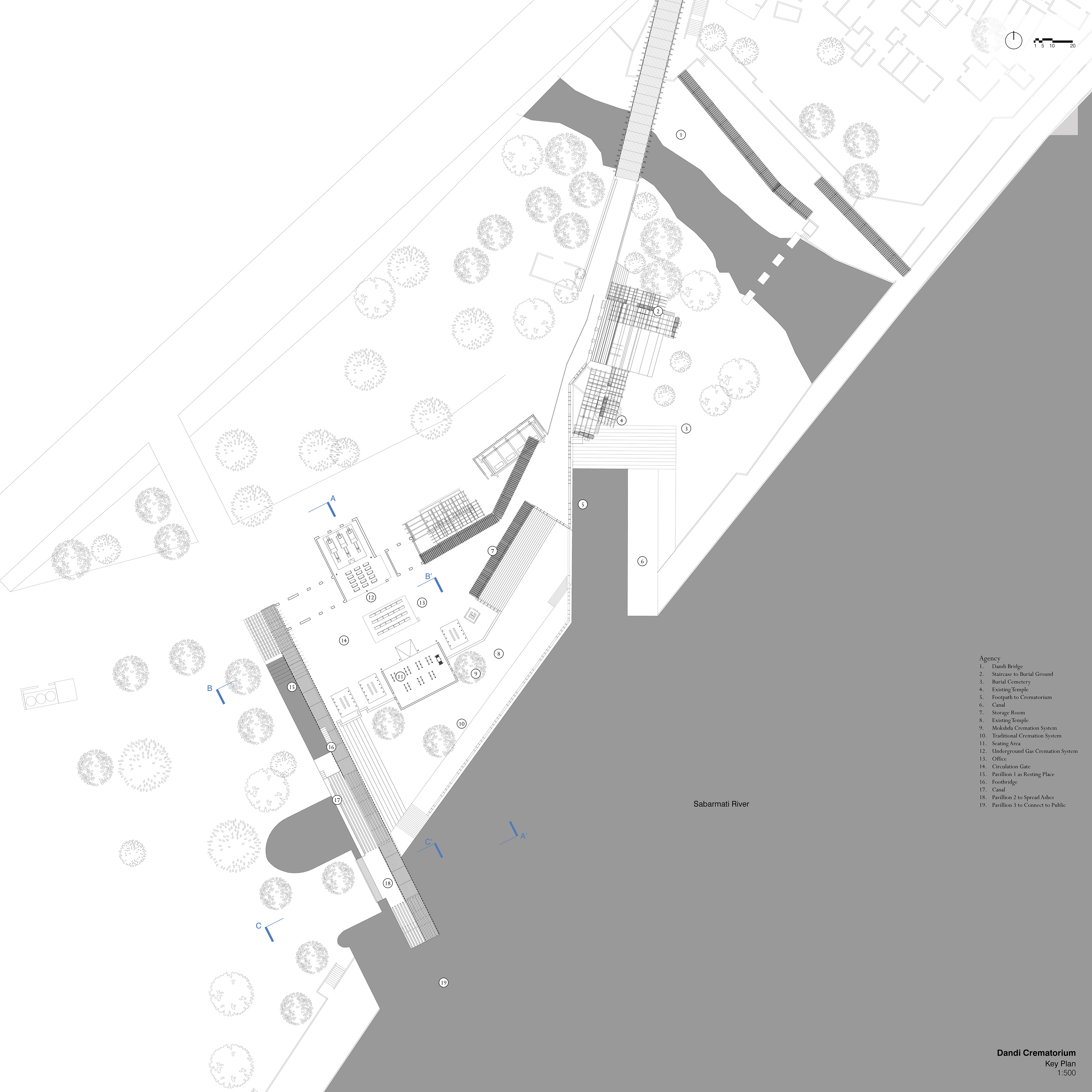
Dandi Crematorium Key Plan
New Wall: Dandi Crematorium
The new serialities of the narrativity of The Salt March altered the way we perceive the boundaries of the crematorium. As the journey of the crematorium evokes the memories and narrativity of The Salt March, it is also important to Indian rituals. Therefore, the narrative of rituals proclaimed new boundaries to the crematorium. Thus, a new seriality from the cosmological scale into the narrativity of The Salt March comes forward.
A new wall is developed (left) to enriched the final step of the ritual: to spread the ashes. In addition, it improves the communication between crematorium and the existing wall of the riverfront, by letting Sabarmati River to run into the crematorium. Therefore, a journey in Dandi Crematorium, that is haunted by the ghost of The Salt March, is refined by the seriality of metropolitan movements and the cosmological connection between river and ritual. The journey started to connect Dandi Bridge, Dandi Crematorium and Sabarmati River - an enactment of The Salt March.
(Danidi Crematorium Plan) The family walked through Dandi Bridge, passing burial cemetery, accompanied by the first canal, consequently passing the pyres storage. When they reached the crematorium, they proceeded with the rituals. Finally, they would reach the second canal, and spread the ashes.
This South-East Isometric illustrates the new wall’s latest development. Showing the journey of the families from Dandi Bridge, Dandi Crematorium and Sabarmati River.
Brainstorm collage of atmospherical journey in burial cemetery
Burial Cemetery and storage place
[Amenity]
A programme for burial cemetery is to extend the capacities of the burial ground to the canal, in addition, to create a sitting area. It can accommodate around 20 people. The public place’s atmosphere is portrayed in the collage (left).
By adopting the existing construction structure near the crematorium (section below), a storage place for pyres is programmed. 150kg of wood for each Mokshda cremation system; 500kg of wood for each traditional cremation system.
Cross section shows storage place, entrance of gas crematorium, circulation to first pavilion
Crematorium Systems
[Factory]
7 Traditional cremation system, 3 Mokshda cremation system, 3 gas cremation system. One cremation system accompanies 10 family members. Spaces in crematorium can accommodate 100-130 folks.
Traditional cremation system:
In traditional Hindu cremations, the body is placed on top of a pile of wood. The body is then covered with more wood and burned in the open air. This method requires around 600-800 pounds of wood to burn a single body, a process that can take as long as six hours. Important rituals are carried during cremation.
In traditional Hindu cremations, the body is placed on top of a pile of wood. The body is then covered with more wood and burned in the open air. This method requires around 600-800 pounds of wood to burn a single body, a process that can take as long as six hours. Important rituals are carried during cremation.
Mokshda eco-cremation system:
It uses 200 pounds of wood for cremation rather than the quantities from the traditional cremation system. Yet the system has two obstacles of acceptance for others. For one thing, improving cremation methods is a low priority for cash-strapped municipalities facing a host of public health issues. The other obstacle is the resistance of traditionalists who don’t want to mess with a matter as sensitive as the fate of a loved one’s soul.
It uses 200 pounds of wood for cremation rather than the quantities from the traditional cremation system. Yet the system has two obstacles of acceptance for others. For one thing, improving cremation methods is a low priority for cash-strapped municipalities facing a host of public health issues. The other obstacle is the resistance of traditionalists who don’t want to mess with a matter as sensitive as the fate of a loved one’s soul.
Gas cremation system:
This system is considered to be more ecological. Yet, it is not many people’s choice as it diminished the rituals that take place around the body. After two hours, families can collect the ashes.
This system is considered to be more ecological. Yet, it is not many people’s choice as it diminished the rituals that take place around the body. After two hours, families can collect the ashes.
Footbridge and Pavilions - water strategy
[Butt]
The new wall connects the journey between the river and the crematorium, as well as provides the canal and the footbridge for the final step of the ash scattering ritual. Footbridge which elevates from the ground attempts to let the folks experience the serenity after being around the fire during cremation. And the three pavilions on the footbridge are programmed differently through the narrativity of the journey.
The first pavilion provides a resting place as an immediate passage from the crematorium to the second pavilion. Consequently, the second pavilion has a lower deck which leads the families closer to the canal and spread the ashes. It also forms a boundary between the riverfront (public) and the crematorium (private). Soon after this ritual is finished, the journey continues to the third pavilion. It is a platform where families can either exit the crematorium by walking South to the riverfront, or to exit through the North of the crematorium towards Dandi Bridge.
For the entire journey, families are being surrounded by water, and this strategy brings in the cosmological rituals, and it maintains the boundaries between private and public.
Second Pavilion - water strategy
[Butt]
The second pavilion speculates with the movements of ghosts through the journey between public and private. Water in the canal receives the ashes, and throughout the day, the water renewed from the Sabarmati River movements. Yet, there is a dialectical tension between the activities inside and outside the pavilion. It is curated in a way that the water is a division between public and private, but it also gathers them together through phenomenology.
Ghost Phenomenology Dandi Crematorium
As the crematorium was discovered while investigating the narravitity of The Salt March in-situ, the ghost of Gandhi presents the journey from Dandi Bridge, crematorium and Sabarmati River. Therefore, Dandi crematorium consists of body postures from the event of The Salt March. The journey connectivity is also emphasised through a series of new projections onto the narrativity of the place. In which, the seriality of slides are allocated by their geographic relation in the global scale.
In cosmological scale, the existing crematorium itself has a narrativity of Indian rituals, which is the culture of life and death. For Islam, bodies would be burried and families would pray around the caskets. Whist, for Hinduism, in order to liberate the soul from the cycle of life, fire and water are the important elements for the rituals procedures. Cremation takes place when the families are around the fire. Consequently, families can choose to take the ashes home or scatter them to the river.
By bringing this ritual into the journey in Dandi crematorium, it extended the narrativity of The Salt March from Dandi Bridge to Sabarmati River cosmologically. To accommodate this phenomenology within the journey, a new wall from the riverfront is altered in order to lead the Sabarmati river into the crematorium, forming a canal. While having the families experience the rituals on a footbridge above the canal, they also experience the serenity being physically apart from the fire from the crematorium.The families also start the journey by crossing Dandi Bridge, towards the river, in which, they are re-enacting the Salt March.
Drawing on the left is a cross section through the middle pavilion on the footbridge. It aims to capture the image of the ghost through the establishment of the dialectical tensions between what has been and what is yet to be. Events within the pavilion captured the act of scattering ashes above the canal. Whilst there is yet to be a connection between the public of the riverfront and the semi-public space in the crematorium.
Dandi Crematorium Designed by Chu-Lin Pamela Feng
